Introduction
Purchasing software is a critical asset for organizations that aim to enhance their procurement process. The right purchasing software can lead to a 25% reduction in cost and offer 2.5x greater ROI besides several other benefits. However, with so many options available, it can be overwhelming for you and the stakeholders to figure out the best software for your organization.
In this blog, we bring to you the 10 best purchasing software and other additional information you need to choose the best purchasing software. We’ll cover the key features of each software, pricing, and benefits.
List of 10 best purchasing software
- SAP Ariba
- Coupa
- Procurify
- Teampay
- Zip Intake-to-Procure
- PRM360
- Planergy
- Order.co
- Precoro
- Emburse Certify Expense
A detailed comparison of the 10 best purchasing software
Name |
Market segment |
Free trial |
Starting price |
Overall rating |
Ease of use rating |
SAP Ariba |
Enterprise |
No |
Contact for pricing |
4.0 out of 5 |
7.9 |
Coupa |
Enterprise |
No |
Contact for pricing |
4.2 out of 5 |
8.6 |
Procurify |
Mid-market |
No |
$2,000.00 Per Month |
4.6 out of 5 |
9.1 |
Teampay |
Mid-market |
No |
Contact for pricing |
4.4 out of 5 |
9.1 |
Zip Intake-to-Procure |
Mid-market |
No |
Contact for pricing |
4.8 out of 5 |
9.1 |
PRM360 |
Enterprise |
Yes |
Contact for pricing |
4.8 out of 5 |
9.8 |
Planergy |
Small business |
Yes |
Contact for pricing |
4.9 out of 5 |
9.4 |
Order.co |
Mid-market |
No |
Contact for pricing |
4.5 out of 5 |
9.3 |
Precoro |
Mid-market |
Yes |
$35.00 per month per user |
4.7 out of 5 |
9.4 |
Emburse Certify Expense |
Mid-market |
Yes |
Contact for pricing |
4.5 out of 5 |
8.8 |
10 Best purchasing software: An in-depth explanation
Here’s an in-depth look at the top 10 best purchasing software:
1. SAP Ariba
SAP Ariba is a leading cloud-based purchasing solution that offers collaborative spend, finance, and sales management capabilities. Organizations can streamline their procurement processes and enhance collaboration with suppliers. The software is accessible online through a browser, providing users convenience and flexibility.
Its user-friendly interface ensures ease of navigation and adoption. It is available by subscription and on-demand, eliminating the need for software installation or maintenance. This cloud-based approach enables organizations to seamlessly access the software’s features and updates.
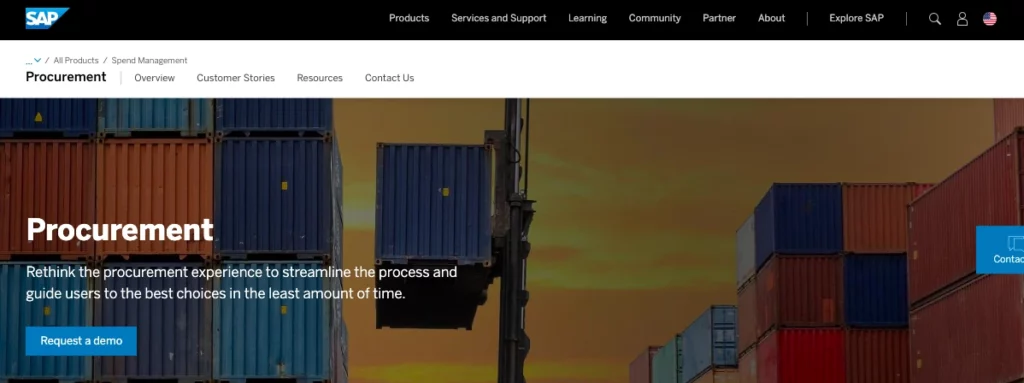
Key features and functionalities
- Cloud-based solution
- Spend management
- Collaborative finance management
- Sales acceleration management
Benefits
- All-in-one command center
- Unified requisitioning experience
- Central demand aggregation
- Enterprise contract orchestration
- Central analytics
Pros and cons
Pros |
Cons |
|
Streamlines the entire procurement process to reduce costs |
According to a G2 review, the user interface can be complicated for new users |
|
Enables increased collaboration and flexibility in the organization |
According to a review, creating a procurement order can be complex due to the number of options and resources that users need to be aware of |
Pricing and plans
Contact the sales team for pricing
Ratings
4 out of 5
Quick Read: 10 Best Spend Management Software for Enterprises
2. Coupa
Coupa is a robust purchasing solution that empowers organizations to control their spending and improve their growth prospects. Companies can gain enhanced control and visibility over their procurement processes, enabling them to make informed decisions and optimize their spending.
The software is a single source for all spend management needs, encompassing procurement, invoicing, expense management, and supplier management. Coupa provides a holistic solution for managing and optimizing spend, allowing businesses to achieve better financial health.
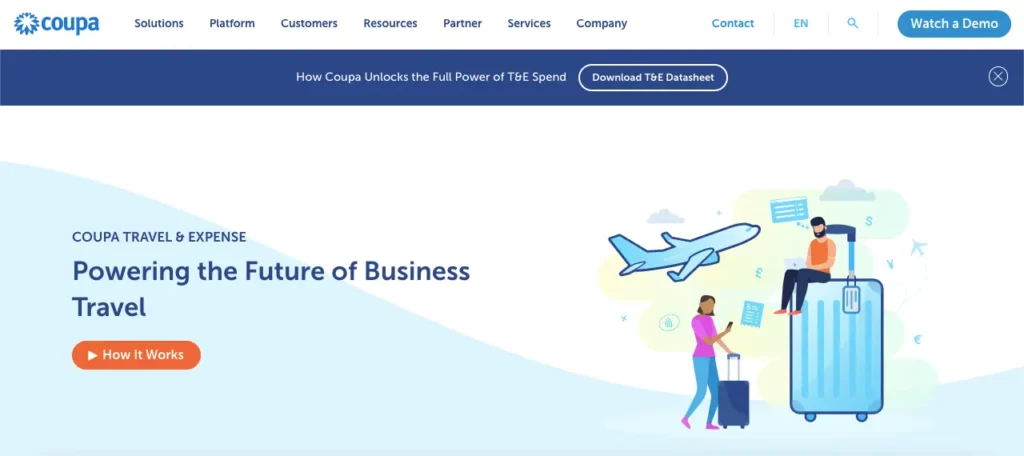
Key features and functionalities
- Centralize management of requests and approval process
- Accounts payable automation
- Integrated vendor onboarding and management
- Global payments platform
Benefits
- Smart guides to help employees make the right purchasing decisions
- Embeds purchasing requisition policies directly in the buying experience
- Automatic routing, reporting, and email and mobile approvals
Pros and cons
Pros |
Cons |
|
Enterprise-level app with flexibility, intuitiveness, and user-friendliness |
According to a review, the dashboard can be improved for enhanced customization |
|
Ease of use to drive spend and automation |
According to a review, there can be more user-friendly options for analytics |
Pricing and plans
Contact Coupa sales team for pricing
Ratings
4.2 out of 5
Read More: TOP 7 Coupa Alternatives and Competitors: A Closer Look
3. Procurify
Procurify is an easy-to-use intelligent spend management and procurement platform that empowers organizations with real-time visibility and control over their business spend. Companies can efficiently manage their processes on a procurement management platform and minimize rogue spendings and rework.
The software helps businesses save time and money by automating manual tasks, streamlining purchase approval workflows, and providing actionable insights into spending patterns. Ultimately, businesses can make smarter purchasing decisions, and reduce inefficiencies.
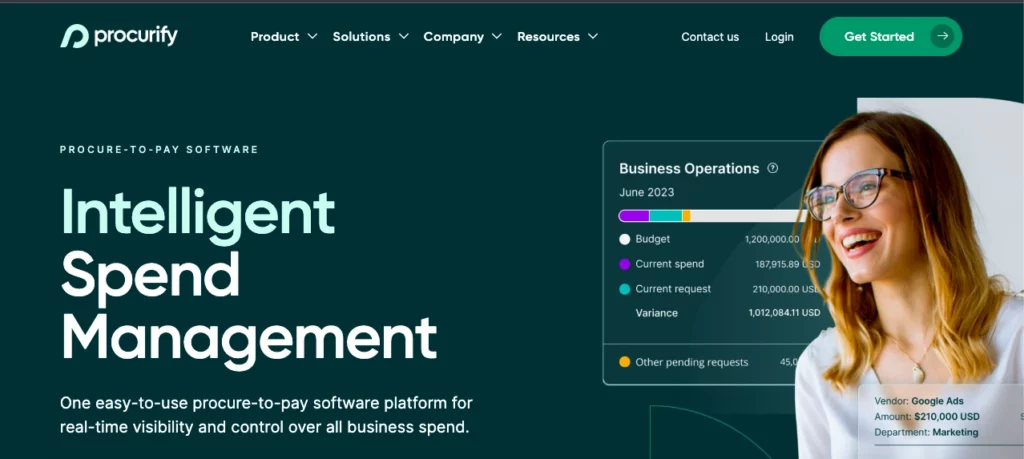
Key features and functionalities
- Purchase requests
- Expense management
- Approval workflows
- Standardized purchase requisitions
Benefits
- Promotes transparency and accountability across the organization
- Captures reliable spend data to fuel business growth
- Streamlines communication and empowers decision-making
Pros and cons
Pros |
Cons |
|
It has a helpful resource center |
According to a review, navigating the tax area when adding an expense report can be tricky |
|
Ease of ordering from multiple websites |
According to a review, creating several POs one by one can be a hassle |
Pricing and plans
$2,000.00 per month
Ratings
4.6 out of 5
Quick Read: 10 Best Expense Management Software and Tools
4. Teampay
Teampay is an all-in-one purchasing software that offers comprehensive spend management features. Organizations can efficiently manage all company spend in one centralized platform. The software provides real-time visibility into actual spend, allowing businesses to track expenses, budgets, and invoices in a streamlined manner.
Teampay empowers quick and compliant purchases by providing employees with the tools and controls to make authorized spending decisions. Organizations can optimize their spend management processes, enforce compliance, and gain greater financial control.
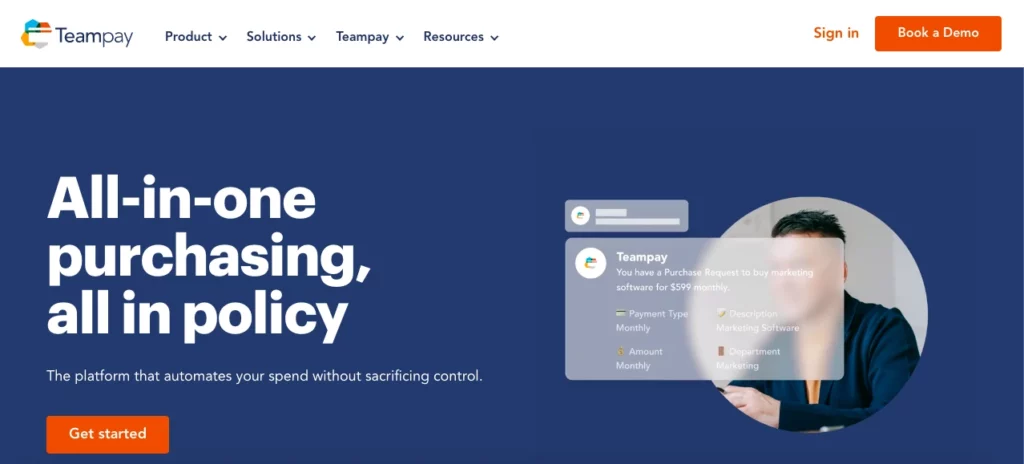
Key features and functionalities
- All-in-one spend management
- Real-time visibility into actual spend
- Automated purchasing workflows and reconciliation
- Pre-coded and pre-approved spending
Benefits
- Approve purchases before they happen
- Deliver an effortless employee experience
- Automate your routine work
- Maximize productivity company-wide
- Track your spend in real time
Pros and cons
Pros |
Cons |
|
Seamless issue and tracking of payments |
According to a review, there can be more control over the payment activity |
|
Integrates with Slack for seamless collaboration |
According to a review, there is no reporting API |
Pricing and plans
Contact Teampay sales team for pricing
Ratings
4.4 out of 5
Read More: What Is Purchase Order Automation and How to Do the PO Process?
5. Zip Intake-to-Procure
Zip Intake-to-Procure is a leading intake-to-procure solution that revolutionizes the purchasing process. It provides organizations a centralized platform to conveniently initiate purchase or vendor requests. The software seamlessly integrates into all major ERP (Enterprise Resource Planning) and P2P (Procure-to-Pay) solutions, enabling smooth data flow and process integration.
The seamless integration allows organizations to gain clear visibility across all their purchases, eliminating silos and enhancing transparency. With its user-friendly interface and powerful features, Zip Intake-to-Procure simplifies the procurement workflow, improves efficiency, and drives better decision-making.

Key features and functionalities
- Centralized purchase and vendor request platform
- Streamlined approval across teams
- Integration with major ERP and P2P solutions
- No-code configuration
Benefits
- Effortless procurement front door for employees
- Orchestration with real-time control
- Pre-built connectors to essential systems
Pros and cons
Pros |
Cons |
|
Easy to learn and use UI |
According to a review, there can be more reporting functionalities |
|
Adjustable workflows to combat organizational changes |
According to a review, there can be more flags and notifications |
Pricing and plans
Contact the sales team for pricing
Ratings
4.8 out of 5
Quick Read: Centralized and Decentralized Purchasing: Which is Best for Your Business?
6. PRM360
PRM360 is a leading purchasing management solution that specializes in meeting purchase-to-pay requirements. With its comprehensive features, PRM360 helps organizations effectively manage their procurement processes from start to finish. It cuts down on any possible delays in the payment schedule, ensuring timely payments to suppliers.
The software contributes to vendor satisfaction and strengthens supplier relationships. What’s more, PRM360 eliminates any unproductive time spent by the procurement team on manual follow-ups, allowing them to focus on strategic activities. Using PRM360, organizations can optimize their purchasing operations, enhance efficiency, and improve overall procurement performance.
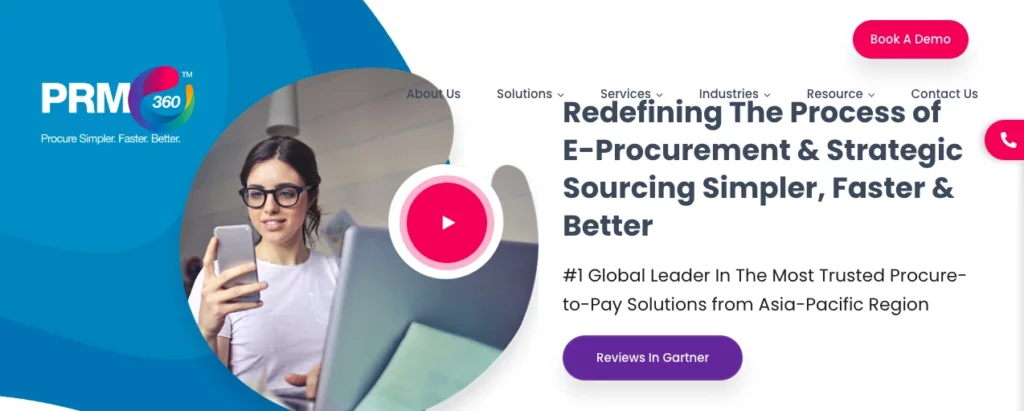
Key features and functionalities
- Online bidding process
- Automatic reminders to the vendor
- Online approvals for clearances
Benefits
- Unified procurement solution that drives greater efficiency
- Easy-to-use and intuitive interface
- Fully customizable interface
- No limitation on users
Pros and cons
Pros |
Cons |
|
Well-organized vendor bidding process |
According to a review, the workflow and UI should be enhanced |
|
Vendors can participate in the auction |
According to a review, there should be an inbuilt workflow tool for various steps |
Pricing and plans
Contact PRM 360 sales team for pricing
Ratings
4.8 out of 5
Read More: Vendor Management System (VMS): Benefits, Features & TOP Systems
7. Planergy
Planergy is a SaaS-based purchasing solution that offers a comprehensive spend management system. The software allows companies to gain more control over their financial operations by streamlining and automating the procure-to-pay and AP automation processes.
The software enables organizations to manage spending efficiently, from requisitions and purchase orders to invoice processing and payment reconciliation. Automating these processes helps Planergy minimize manual errors, reduce processing time, and enhance accuracy.
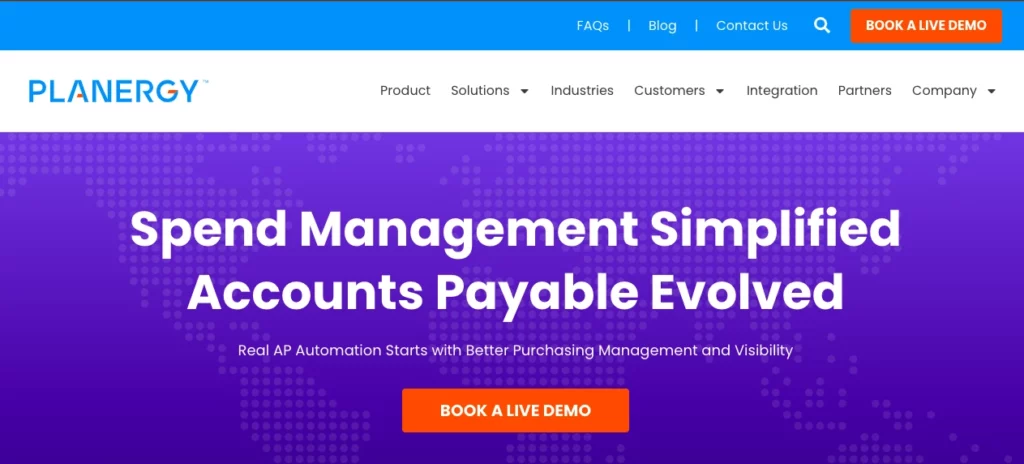
Key features and functionalities
- SaaS-based spend management system
- Procure-to-pay automation
- AP automation
- Real-time reporting through dashboards
Benefits
- Streamlined approval processes
- Reduced accounts payable processing costs by 80%
- Real-time spend visibility
- High ROI at a competitive price
Pros and cons
Pros |
Cons |
|
Offers complete visibility and control over spending |
According to a review, the search functionality could be more robust |
|
Authority and access levels with full audit trails |
According to a review, multi-line invoices export have less detail than desired |
Pricing and plans
Check out the website for pricing related details.
Ratings
4.9 out of 5
Read More: Purchase Order and Invoices: Definition and Differences
8. Order.co
Order.co is a web-based purchasing software that serves as a spend efficiency platform for businesses. This software saves organizations significant time and money in their procurement processes. It provides clarity into their spend by offering real-time visibility and comprehensive analytics.
Organizations can streamline purchasing operations by eliminating manual procurement and payment processing tasks. Automating these tasks helps improve efficiency, reduces errors, and enables teams to focus on strategic initiatives.
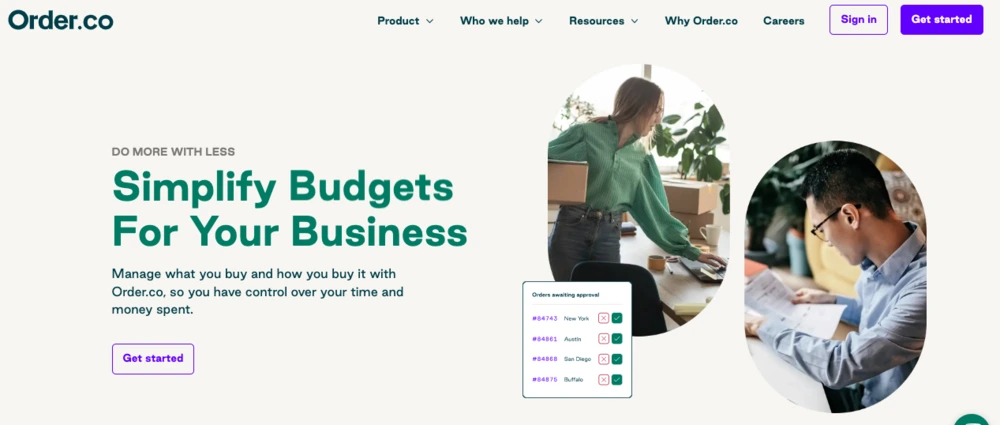
Key features and functionalities
- Eliminates manual purchasing and payment tasks
- Centralized purchase, approval, track, and pay system
- Customizable budgets and reporting
Benefits
- Automatic PO generation
- Rule-based approvals
- Budgets and reporting
- Order tracking
- Audit trails
Pros and cons
Pros |
Cons |
|
Frequently ordered page makes purchasing simple |
According to a review, the setup can be confusing at first |
|
The layout is user-friendly and simple, just like shopping platforms |
According to a review, users cannot checkout and go through the next stage when purchasing goods from multiple vendors |
Pricing and plans
Contact the Order.co sales team for pricing details
Ratings
4.5 out of 5
Quick Read: Purchase Requisition vs Purchase Order: A Comparative Guide
9. Precoro
Precoro is a cloud-based purchasing software that offers a comprehensive solution for optimizing the procurement process. Your organization can bid farewell to time-consuming manual procedures and the potential for human errors. It automates operations and centralizes purchasing processes, allowing you to streamline procurement workflows and enhance efficiency.
Precoro’s user-friendly interface and robust features allow you to automate requisitions, purchase orders, and invoice processing. It results in improved accuracy, reduced cycle times, and better procurement performance.
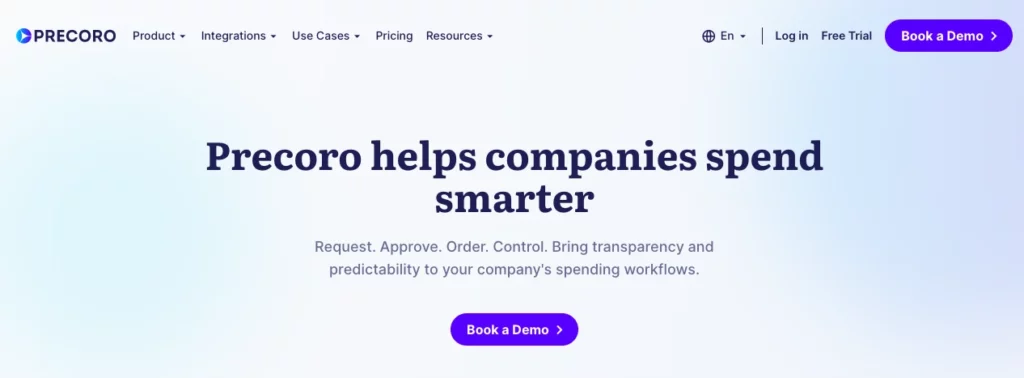
Key features and functionalities
- Approve documents 2.5x faster
- Streamline approval workflow
- Save purchasing budget
- Track discounts and never spend more than planned
Benefits
- Electronic, round-the-clock tools and features for better procurement management
- Control the procurement process and approvals on the go
- Regular reports and data analysis to ensure complete control over procurement process
Pros and cons
Pros |
Cons |
|
Offers a wide functional coverage, including purchase requests and invoice management |
According to a review, the supplier base customization can be improved |
|
Customer support is responsive |
According to a review, the expense module is not integrated with Quickbooks |
Pricing and plans
$35 per month per user
Ratings
4.7 out of 5
Also, Read: 12 Best Invoicing Software
10. Emburse Certify Expense
Emburse Certify Expense is a powerful and trusted purchasing solution that offers spend optimization solutions. The software humanizes work by delivering extensive expense, accounts payable, and business travel solutions. Organizations can simplify their expense management processes with automated features.
It results in streamlined workflows, improved accuracy, and reduced administrative burden. Emburse Certify Expense also empowers businesses to manage and control their expenses effectively while enhancing visibility and compliance. With its comprehensive suite of features, Emburse Certify Expense simplifies expense management, allowing organizations to achieve greater operational efficiency.
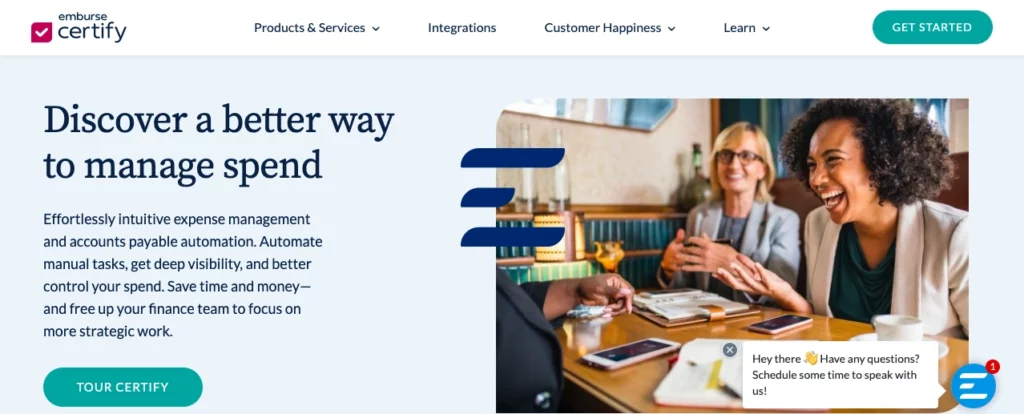
Key features and functionalities
- Automated expense report creation
- Integrated spend request
- Card issuing workflow
- Embedded audit capabilities
- Mobile receipt capture
Benefits
- Gain control and insight over organizational spend
- Automated accounts payable and purchasing work flows
- Overcome tedious processes with complete visibility into cash flow
Pros and cons
Pros |
Cons |
|
The software’s analytic capabilities are easy to navigate and robust |
According to a review, the software doesn’t directly export to the payroll processor |
|
The communication on the platform is centralized |
According to a review, there could be more customization options for reporting features |
Pricing and plans
Contact Emburse Certify Expense for pricing
Ratings
4.5 out of 5
Quick Read: 10 Best Expense Reporting Software
What is purchasing software?
Purchasing software is a tool that helps organizations manage the process of acquiring goods and services from suppliers. It automates the manual tasks related to purchase requisitions, purchase orders, and invoice approvals. Your organization can streamline its procurement process and increase its spending visibility. It can also help reduce errors and save time and money.
Purchasing solutions typically include vendor management, contract management, and spend analysis features. It may also include tools for managing requests for proposals (RFPs), tracking inventory levels, and managing supplier relationships.
Read More: What is Invoice Management: Types, Process, Systems, Challenges
Types of purchasing software
Some of the most common types of purchasing software are:
1. Cloud-based software
It is hosted on the cloud and can be accessed from anywhere. It is popular among small and medium-sized businesses as it requires no hardware or software installation.
2. On-premise software
On-premise software is installed locally on the organization’s servers and requires dedicated IT resources for maintenance and support. This type of software is used by larger organizations requiring a high level of customization and control.
3. Open-source software
It is free to use and can be customized according to the organization’s needs. It is popular among small businesses and non-profit organizations with limited budgets.
4. Supplier relationship management software
It focuses on managing supplier relationships and can help organizations negotiate better contracts, monitor supplier performance, and manage supplier risk.
5. Spend management software
Spend management software helps organizations track their spending and identify areas for cost savings. It usually includes spend analysis, budget management, and cost allocation features.
6. Procure-to-pay (P2P) software
P2P software is an end-to-end solution that automates everything from purchase requisitions to invoice payments. It is a popular choice among larger organizations.
Importance of purchasing software
Purchasing software has become increasingly important for organizations wanting to streamline procurement and achieve greater efficiency. A study found that organizations with advanced procurement capabilities can achieve up to 25% cost savings compared to those with less advanced capabilities.
With benefits like increased efficiency, cost savings, and improved supplier relationships, a purchasing system solution is critical for organizations wanting to gain a competitive advantage in today’s business environment.
Also, Read: 10 Best Business Budgeting Software & Tools
What are the benefits of using a purchasing software?
Purchasing software is crucial in helping organizations streamline their procurement processes and achieve greater efficiency.
Here are some key advantages of purchasing software:
1. Increased efficiency
Automating manual tasks related to purchase requisitions and purchase orders helps organizations complete the procurement process more quickly and with fewer errors. It helps save time and reduce costs, allowing staff to focus on more strategic tasks.
2. Better visibility
The software provides greater visibility into the procurement process, allowing organizations to track spending and identify areas for cost savings. It can also help to identify suppliers who consistently deliver high-quality products or services and those who may pose a risk to the organization.
3. Improved supplier relationships
With supplier management features like contract management and supplier performance tracking, purchasing solutions help organizations build stronger relationships with their suppliers. It leads to better negotiation of contracts and improved delivery times.
4. Reduced risk
Automation of the procurement process and greater visibility helps organizations mitigate the risk of fraud or other errors. It also ensures all purchases comply with the organization’s policies and procedures.
5. Increased compliance
Purchasing software can help organizations ensure that all purchases comply with relevant regulations and standards. It helps avoid costly fines or legal issues.
Quick Read: 10 Best Audit Software
Features to consider when choosing purchasing software
Here are some of the most features to consider when choosing a purchasing solution for your organization:
1. Purchase order management
The ability to manage purchase orders is a core feature of any purchasing software. Look for software that allows you to create, approve, and track purchase orders. Besides, it should also allow you to manage supplier invoices and payments.
2. Supplier management
Good supplier management features can help you to build better relationships with your suppliers and reduce the risk of supplier-related issues. The software should include supplier performance tracking, contract management, and supplier risk assessment.
3. Budget and spend management
It’s important to clearly understand your organization’s spending and budget to make informed decisions. Watch out for budget tracking, spend analysis, and real-time reporting features.
4. Integration with other systems
Purchasing software should be able to integrate with other systems like accounting software or inventory management. Look for easy integration with other systems, and ensure it is compatible with your existing technology infrastructure.
5. User-friendly interface
The software should be easy to use for both employees and suppliers. Get something with a simple, intuitive interface and clear instructions for users.
6. Customization
Every organization has unique needs and requirements, so choosing the software you can customize to fit your needs is important. Look for software that offers flexibility and customization options.
7. Security
With sensitive financial and supplier information being stored in the software, it’s important to ensure security. The software should offer data encryption, access controls, and regular updates.
Quick Read: 6 Best Cash Flow Management Software
How does purchasing software work?
Here’s a general overview of how a purchasing solution typically operates:
- Requisition management: The process starts with creating purchase requisitions. Authorized employees can submit requests for goods or services through the software, specifying item descriptions, quantities, and desired delivery dates.
- Approval workflow: The software routes the requisitions through an approval workflow, ensuring the appropriate individuals or departments authorize them. You can customize the workflow based on the organization’s hierarchy and policies.
- Purchase order generation: Once a requisition is approved, the software generates a purchase order (PO). It includes all the necessary details, including supplier information, pricing, and delivery terms. The PO is then sent to the designated supplier.
- Supplier management: Purchasing software includes features for managing supplier relationships. It allows users to maintain a centralized supplier database, track performance metrics, and manage contracts.
- Receipt and invoice matching: The software enables users to match the received items with the corresponding purchase order when the goods or services are received. It ensures accuracy and helps prevent discrepancies. Additionally, the software may facilitate the automated matching of supplier invoices with purchase orders and receipts.
- Reporting and analysis: The software provides comprehensive reporting and analysis capabilities. It generates reports on spending patterns, supplier performance, budget utilization, and other key metrics. These insights help identify cost-saving opportunities, negotiate better contracts, and make data-driven decisions.
- Integration with other systems: Purchasing software integrates with other systems related to accounting, inventory management, or enterprise resource planning (ERP). The integration allows seamless data exchange and enhances overall operational efficiency.
How to choose the best purchasing software?
Here are some factors to keep in mind when choosing a purchasing software for your organization:
- Assess your organization’s needs
Start by understanding your organization’s specific requirements and objectives. Identify the pain points and challenges in your current procurement process. Consider your organization’s size, the complexity of your procurement operations, and industry or regulatory considerations.
- Define key features and functionality
Create a list of essential features crucial for your organization. It could be purchase order management, supplier management, budget tracking, and customization options. Prioritize these features based on their importance to your organization’s needs.
- Consider flexibility
Evaluate whether the software can scale with your organization’s growth and adapt to changing requirements. Consider the number of users supported, the ability to handle increased transaction volumes, and the software’s flexibility to accommodate future enhancements or integrations.
- Assess user-friendliness
The software should have a user-friendly interface and intuitive navigation to ensure smooth adoption and usage by employees across different roles and departments. Consider the ease of implementation, training requirements, and the availability of user support and resources.
- Integration capabilities
Determine if the software can integrate with your current accounting accounting system, inventory management, or ERP systems. What’s more, seamless integration enables data sharing, reduces duplicate data entry, and streamlines processes.
- Security and compliance
Ensure the software prioritizes data security and compliance with relevant regulations. Look for data encryption, user access controls, audit trails, and regular software updates to mitigate risks and protect sensitive information.
- Vendor reputation and support
Research the vendor’s experience in the industry. Read customer reviews to gauge their track record of delivering reliable software and providing excellent customer support. Evaluate the vendor’s responsiveness, training resources, and ongoing technical support options.
- Total cost of ownership
Consider the licensing fees, implementation costs, maintenance, and ongoing support. Assess the software’s value proposition in terms of its benefits and potential return on investment.
- Request demos
Request demos and trial versions of the shortlisted purchasing software to assess its functionality, usability, and compatibility with your organization’s requirements. A hands-on experience will help you make a more informed decision.
Bottom line
Leveraging the capabilities of these top-notch purchasing solutions will help automate manual tasks, gain better visibility into spending, improve supplier relationships, and achieve cost savings. However, choosing the right purchasing software requires a thorough assessment of your organization’s unique requirements.
So, embrace the power of the right purchasing software to streamline your procurement processes and drive efficiency within your organization.
FAQs
The best software for purchase orders can vary depending on an organization’s specific needs and requirements. Some popular options include SAP Ariba, Coupa, Procurify, and Teampay.
SAP purchasing software is a procurement solution provided by SAP, a leading software company. SAP offers various procurement solutions, including SAP Ariba, which helps organizations streamline their procurement processes.
The three commonly recognized purchasing types are direct, indirect, and strategic sourcing. Direct purchasing involves buying goods and services directly related to producing goods. Indirect purchasing refers to goods and services unrelated to production, such as office supplies or maintenance services. Strategic sourcing is a more strategic approach to purchasing, involving long-term planning, supplier evaluation, and negotiation to achieve cost savings and supply chain management optimization.
There are three common ways to purchase software: through a perpetual license, where you own the software outright; through a subscription model, where you pay a recurring fee; or through a software-as-a-service (SaaS) model, where the software is hosted in the cloud and accessed via the internet.
The software used in the purchase department can vary depending on the organization. Popular software solutions used in the purchase department include procurement software, spend management software, and e-procurement tools.
The best software for procurement management depends on an organization’s specific needs and requirements. Some popular options include SAP Ariba, Coupa, Oracle Procurement Cloud, and Jaggaer.
Yes, SAP offers various purchasing software solutions, including SAP Ariba, which is widely recognized as a leading procurement and purchasing software platform. SAP Ariba provides organizations comprehensive tools for managing their procurement processes and supplier relationships.



Discussion about this post